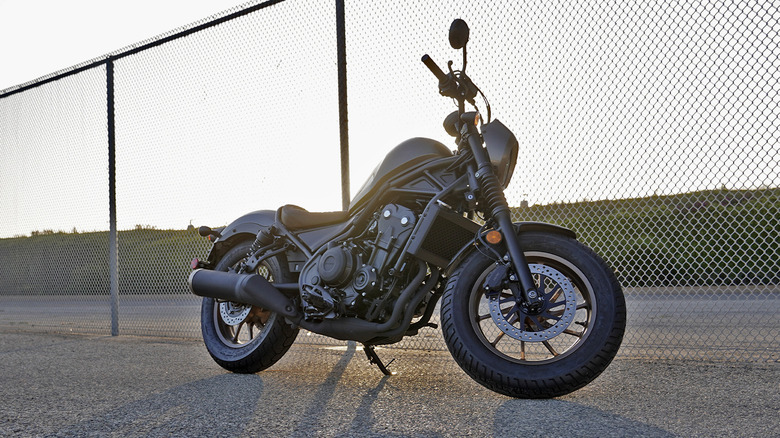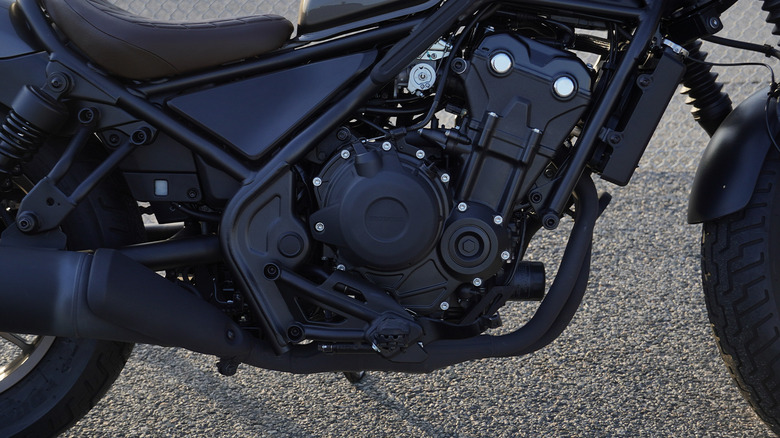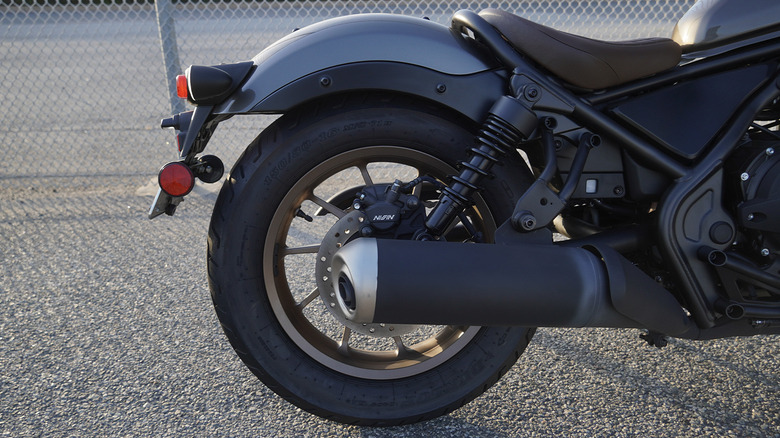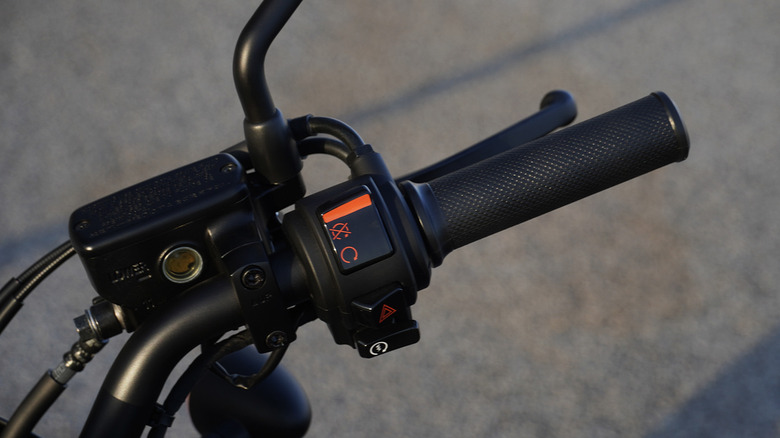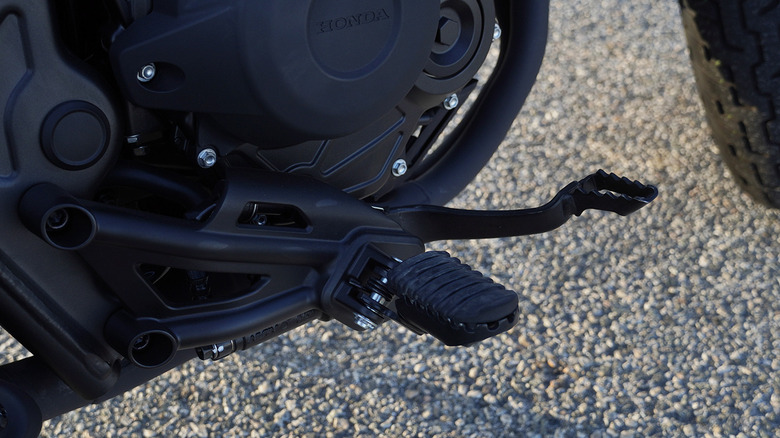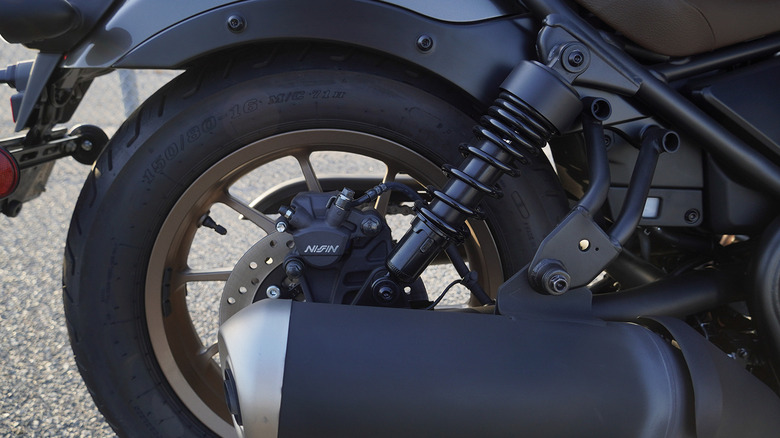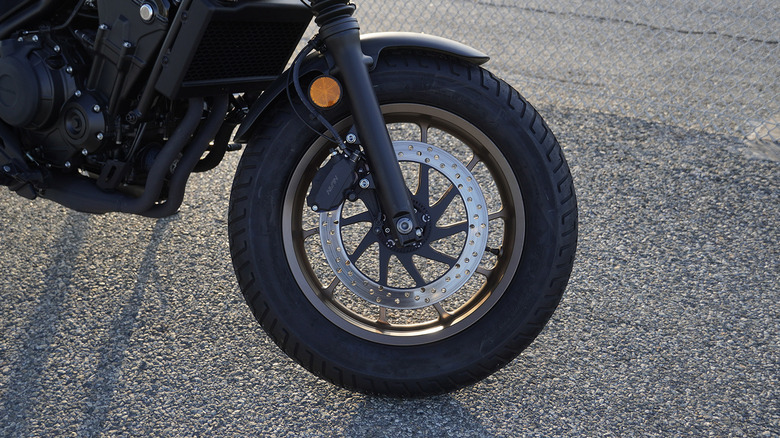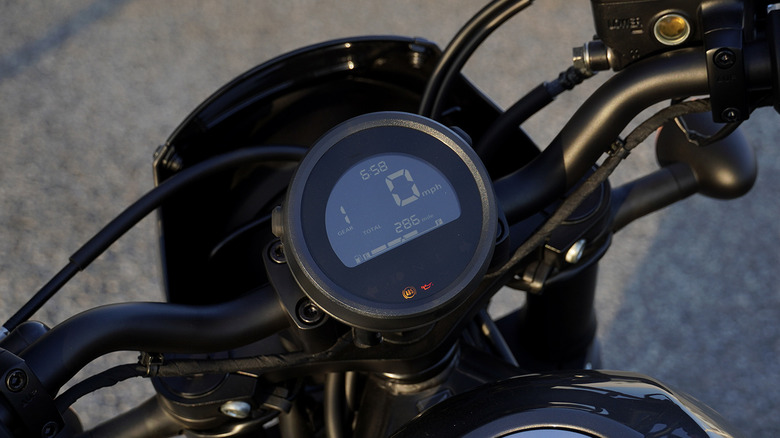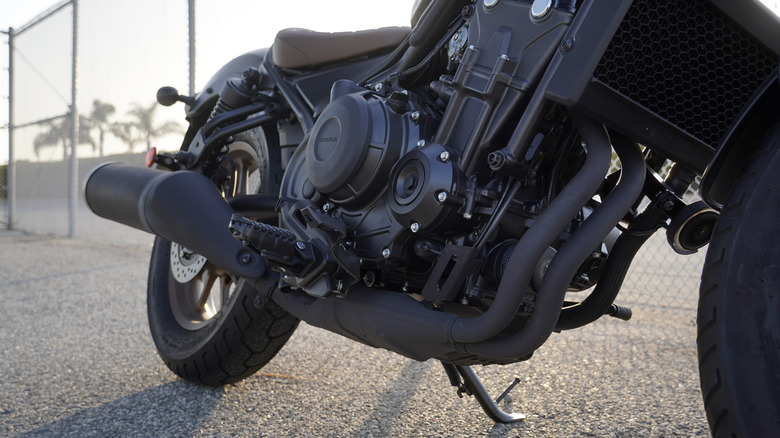2024 Honda Rebel 500 Review: Stylish Cruiser Makes Price Not Top Speed The Priority
After years of riding sport bikes and nakeds, I recently decided the time seemed right to try out a few cruisers. The experience, shall we say, turned out fairly baffling. I rode the whole new lineup of Indian Scouts for two days in the San Francisco Bay Area, then a few weeks later, got a chance to hop on my first Harley-Davidson for a day — a brand-new Street Glide. Talk about trash, what a horrible bike in every single sense. More on the Harley later but, in between experiencing these two quintessential American cruiser companies, I spent some extended time with a Honda Rebel 500.
The Rebel riffs on the cruiser style, with styled fenders, the rear suspension and long exhaust, bellows on the forks with high-ish handlebars, the low seat.... The aesthetic clearly references Harleys and Indians of old, but I hopped on the budget-friendly Rebel wondering whether Honda can manage the same vision of that specific cruiser lifestyle, or a more unique take that makes a cruiser more palatable for every customer in the market.
What even is a cruiser?
I picked up the Rebel 500 in Torrance, swapping for the Transalp I borrowed previously. Just pulling out of Honda HQ, the almost laughable difference between an ADV bike and a cruiser from the same company made my mind boggle. No more long-travel suspension or tall seat, despite the similar upper body posture as on my new favorite Honda, the adventure bike that finally taught me the whole point of adventure bikes.
But on the Rebel, despite sitting straight up, my knees bend more from the mid-controls, my seat felt about two feet lower, and the suspension absolutely reverberates through my spine. Can this really be how all cruisers ride, I thought. Maybe I just need to try out something more classic.
After just 20 minutes or so riding the Rebel home, literally the very next day I joined the Indian Scout ride for two long days in the saddle. Yep, I realized, this is what all cruisers are like. Now obviously, the Indians feature a more serious 1,250cc V-twin and way more power, but the similarly minimal suspension travel and comparable riding position just never got particularly comfortable — and the inkling began to grow fairly serious that I'm just not really a fan of cruisers, in any shape or form.
Everybody hates Harley
Then there's the Harley, and the Street Glide pushing $30,000 out the dealer door. Terrible drive-by-wire throttle response, even more jarring suspension, uncomfortable in a straight line but also can't corner because it weighs 774 pounds(!!!), cheap componentry and yet so expensive ... the Harley seemed to lack any positive aspects at all, and reminded me most of a Citroen C4 Picasso that I rented and then watched actively fall apart over the course of three days on the Isle of Skye in Scotland years ago.
Talking with some fellow journalists that day on the Harley, I learned that everybody hates Harley. The cruiser mystery deepens — why do people spend so much money on these things?
The Honda cruiser approach
Now, obviously, Honda leans into the Harley and Indian spirit with marketing language that includes statements like "the Rebel 500's untamed spirit of rebellion, reigniting your passion for the open road" or "unrestricted bliss on highways and twisties alike" or "transform ordinary journeys into unforgettable adventures." The thought of a little Honda competing against big American bruisers requires a certain stretch of the imagination, especially because, really, it's a good thing that Honda takes a different approach.
Mostly because the Rebel 500 only starts at $6,499 (plus a $600 destination charge). That's half the price of the cheapest Indian Scout and an even cheaper Rebel 300 exists, too. But in this class, I can admit a 300 definitely seems seriously underpowered. So can the Rebel 500 find a happy middle ground with Honda's do-it-all 471cc parallel twin?
Simple in the classic sense
With about 45 horsepower and just shy of 30 lb-ft of torque, this cruiser definitely lacks the beef of a Harley or Indian. But the no-frills nature of the Rebel 500 actually fits perfectly into the semi-classic style that the other companies struggle to marry with modern features. Nothing fancy here, just a simple circular digital dash, a blacked-out frame, matte-black exhaust, and the choice of black, grey, or laurel green for the tank and fenders.
Only a couple of premium touches stand out on the Rebel 500, namely the quilted leather seat and a more futuristic four-bulb headlight design than perhaps the rest of the bike suggests. That's it. And yet, Honda quality still stands out at all the touchpoints where substantiality counts. We're not quite at the level of a CBR1000RR-R Fireblade, of course, and not even quite a Transalp, but the Rebel features an approachable throttle that doesn't require hours to get used to twisting.
A sense of satisfaction with every gear shift comes courtesy of a clunky shift lever and the engagement point of the light yet communicative slipper-assist clutch (something of a surprise at this price point). The switchgear just functions properly, with intuitive locations for each button. Even the subtly dimpled grip texture provides a certain level of vintage quality.
Adjusting to the Rebel
The Rebel's suspension still rides firmer than I expected, especially with my tail so close to the ground. The whole point of cruisers, in my mind, was always to just cruise in comfort and style. Not so, the evidence suggests. Perhaps playing with spring preload might help soften up the jolts and jitters rattling through the seat, but the rear end's engineering simply doesn't allow much travel anyway, so the limits of simple physics come into play. And maybe I'm overreacting because, on most roads, the Rebel rides just fine, and the firmness helps to make the bike predictable with minimal front-to-rear pitch or roll.
Mostly, the biggest contrast versus the Indians and Harley comes down to weight. The Rebel is just so light, at 416 pounds and with most of the mass slung as low to the ground as possible. The center of gravity almost makes nimble the appropriate descriptor, if not truly because even when I leaned into turns and corners, I mostly just shifted my hips — and also turned the narrow handlebars more than on just about any other motorcycle ever.
In the groove again
Of course, cruisers never aim to hustle through corners at radical lean angles anyway, but the Rebel's mid-control pegs and exhaust seem ripe for scraping anyway. And after all the Indians, my next few rides on the Rebel only improved my impressions of Honda's cruiser. I appreciate the chain drive versus the belts that whine a bit on the Americans. The Dunlop D404 tires inhabit style-over-substance at first glance, yet the almost designy tread grooves work surprisingly well on almost any road surface, from gritty asphalt to smooth pavement and etched highways.
As I adjusted, I found a comfortable low squat position, using my hips and feet more than upper body to maneuver the weight around below me — so low and central the sensation almost reminded me of canoeing, or a Porsche 944 with the transaxle and torque tube. Suddenly I turned the bars less and leaned the bike more, until the right heel of my Danner boots started dragging on the ground a bit.
Not a road-tripper
The 471cc "500" engine that Honda seemingly hopes to drop into every class of bike delivers just enough fun in the 416-pound Rebel 500 to allow for a bit of rowdiness. You won't live at redline but will regularly rev almost to the moon while pulling away from traffic at stoplights or trying to get up to highway speeds. And there's an element of silliness when needing to pull hard so much of the time, it's true.
But of course, this cruiser is not the one for long trips. That parallel twin in a budget-friendly frame with minimal suspension definitely gets buzzy fairly quickly. The front single brake disc with a tiny Nissin caliper takes some hand strength but will get the job done at most speeds. Hard braking just requires using the right-foot lever on the mid-controls, which makes for something of an odd experience.
The mid-controls themselves are kind of a bummer, since I actually adapted to the forward controls fairly quickly while riding all the Indians. Keeping my knees bent on the Rebel felt anathema to the cruiser culture — and Honda almost certainly will never offer a forward-control mod since doing so would require longer levers and rods for the rear brake and shifter. Maybe the aftermarket can find a solution, but in the meantime I'd prioritize a bolder exhaust note to match the looks — and straight-piping might unlock just a bit more power, too.
City cruiser or commuter lifestyle
In stock form, the Rebel 500 makes for a good beginner bike, with just enough power to avoid nervousness in traffic. The lack of a tachometer can provide quick lessons on feeling the basics of shifting technique, rather than learning to ride while constantly glancing down and tracking gauges. The lightweight nature of the Rebel means most riders can move the bike around with ease, especially since the seat height is low enough for just about anyone to stand over and flat-foot.
A few other nits to pick include the ignition switch for the key on the left-hand side below the tank, but the handlebar lock being hidden behind the fork bellows on the right side. This requires something of a two-step starting process for anyone else who lets paranoia get the better of them, as I do. More of a windscreen might prevent some helmet buffeting at higher speeds, meanwhile, though we've already covered that this bike isn't truly meant for higher speeds. With a taller screen, of course, aero and power concerns enter the conversation.
Even if I'm still hesitant about cruisers in general, the Rebel is probably also just enough bike for experienced riders who want a cruiser that can handle city commuting. It gets up to 80 miles an hour without too much protest, unlike the CB500X equipped with the same 471cc engine — likely because of the more upright, less aerodynamic profile of that affordable ADV option. Undoubtedly, the Rebel 500 makes some trade-offs in the name of budgetary concerns, too. But for the most part, other than downright thumping torque stats, this Honda manages as a city cruiser quite well.
